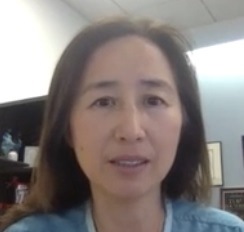
A multidisciplinary limb salvage alliance found that operating room (OR) and clinic volumes, as well as work relative value units (wRVUs), all increased significantly over a four-year period after the recruitment of podiatrists into the programme.
Studying data from 2015–2019, researchers found that although growth was initially put down to the addition of vascular surgeons in year one, podiatry accounted for a 57% increase in clinic—and more than 60% jump in OR traffic—in the last two years.
The data, presented by Wei Zhou, professor and chief of vascular surgery at the University of Arizona in Tucson, USA, at the 2020 Western Vascular Society (WVS) virtual annual meeting (27–29 September, virtual), comes from a study on the economic value of adding podiatry service in a limb salvage alliance. Zhou is also co-director of the group in question: the Southern Arizona Limb Salvage Alliance (SALSA), which was co-founded by vascular surgeon Joseph Mills (University of Arizona, Tucson, USA) and podiatrist David G Armstrong (Keck School of Medicine of the University of Southern California, Los Angeles, USA) in 2008.
“The benefits of close collaboration between podiatry and vascular extends beyond clinical outcome. Understanding and clearly outlining the financial advantages can help bring podiatrists into a limb salvage practice,” said Zhou.
Zhou occupies an apt vantage point.
The area in which her team operates occupies a unique geographic location, she told the WVS gathering: it is home to the largest, densest population of Native Americans in the country, as well as a large Hispanic populace. Tze-Woei Tan (University of Arizona, Tucson, USA), one of the study co-authors, found that among Medicare beneficiaries, Native Americans have the worst outcomes for diabetic foot ulcers and infection.
SALSA, a multidisciplinary “toe and flow” programme now widely adopted around the world, grew out of this stark environment. The institution where they operate, Banner-University Medical Center, a safety net hospital, has a patient population comprised of nearly 40% Hispanic and Native American.
Despite a history of aggressive infrapopliteal revascularisation, nearly 40% of patients required hospital readmission within six months, and over 50% saw prolonged time healing, Zhou explained.
Zhou and colleagues studied a period during which the composition of the alliance went through significant change. The number of podiatrists changed from three to one and now four, while the vascular surgeon contingent moved up from two to four.
Reviewing an administrative database, the investigators plumbed data such as monthly OR cases, clinic encounters, inpatient volume, and total wRVUs generated by the SALSA team.
ANOVA analysis was used to determine significant changes, while Tukey’s multiple comparison test was deployed to determine changes between years.
Some 37,000 patients were seen at the SALSA clinic and over 5,500 operative cases were performed over the period. Overall, Zhou et al found 100% growth in clinic visits, operative cases, and wRVUs from 2015 to 2019. “Vascular surgery has grown significantly over the last five years and was significant for each year,” commented Zhou. “The initial growth was attributed to vascular surgeons. An increase in the podiatry complement contributed to over 100% growth in the clinic volume. Podiatry in general added twice as many patients in clinic than vascular surgeons. They see up to 1,000 patients a month, while vascular surgeons typically see 300–400 patients a month.”
Initial growth in patients treated in the OR, too, was initially attributed to vascular surgeons, Zhou continued. In 2019, podiatrist recruitment contributed to an additional increase of 40%, she said. “Despite podiatric procedures being shifted from vascular surgeons to the podiatrists, in 2018 and 2019 vascular surgeons continued to see an incremental growth in OR volume. When we look at total wRVU, not surprisingly podiatry had a significant increase in wRVU in 2019, and contributed to a total 40% of group wRVU. Vascular surgery continues to enjoy 10% growth.” Inpatient consult volume was also up significantly: 100 a month for the podiatrists and 140 for the vascular surgeons.
Summing up, Zhou observed: “Podiatrists had the greatest contribution to outpatient care—up to 70% of total clinic encounters were done by podiatrists. Podiatrists contributed to up to 40% of OR cases, inpatient consultations, total wRVUs, and total charges in our group. And, shifting podiatric procedures to podiatrists did not impact vascular surgeons’ productivity.”











